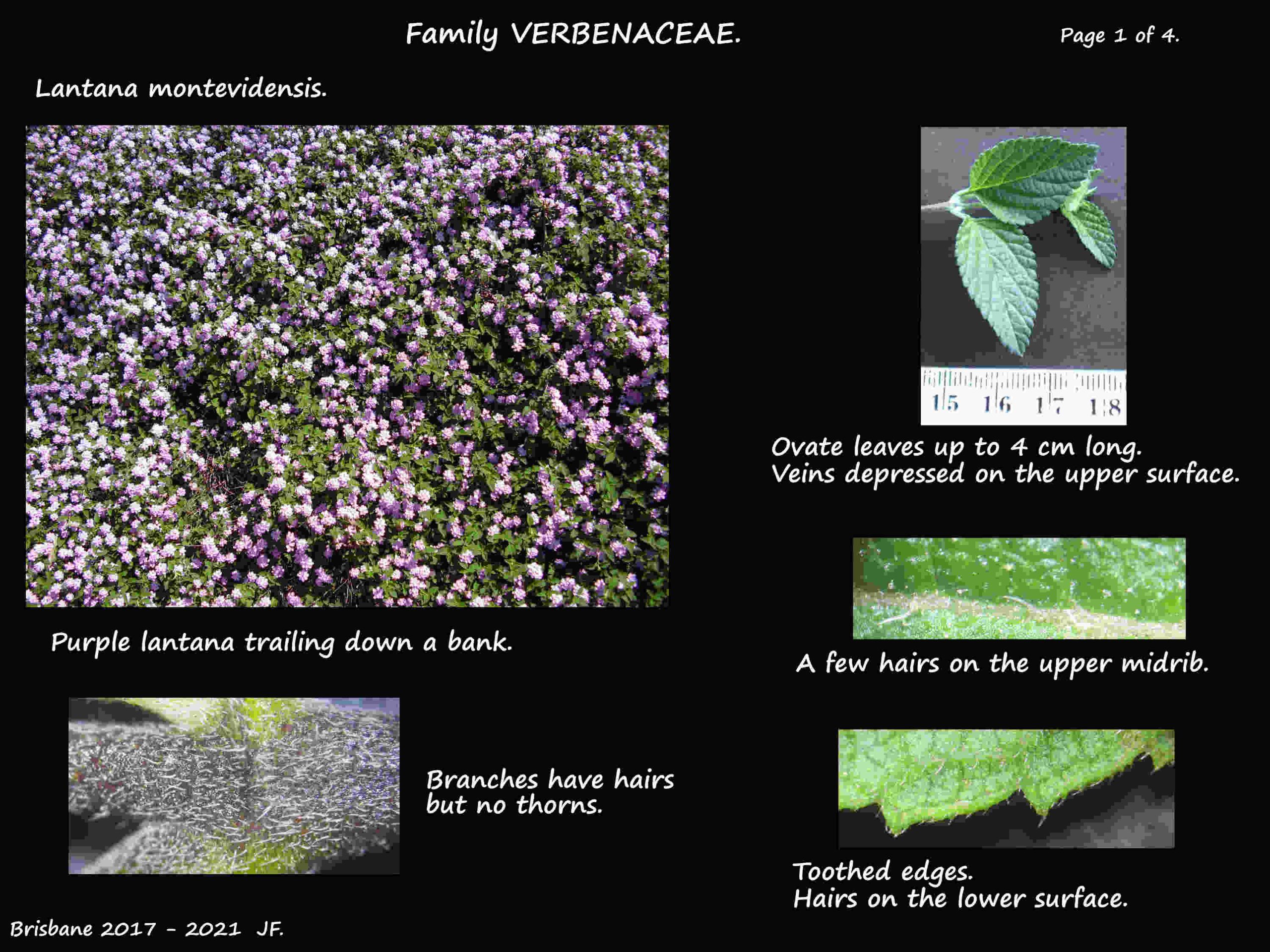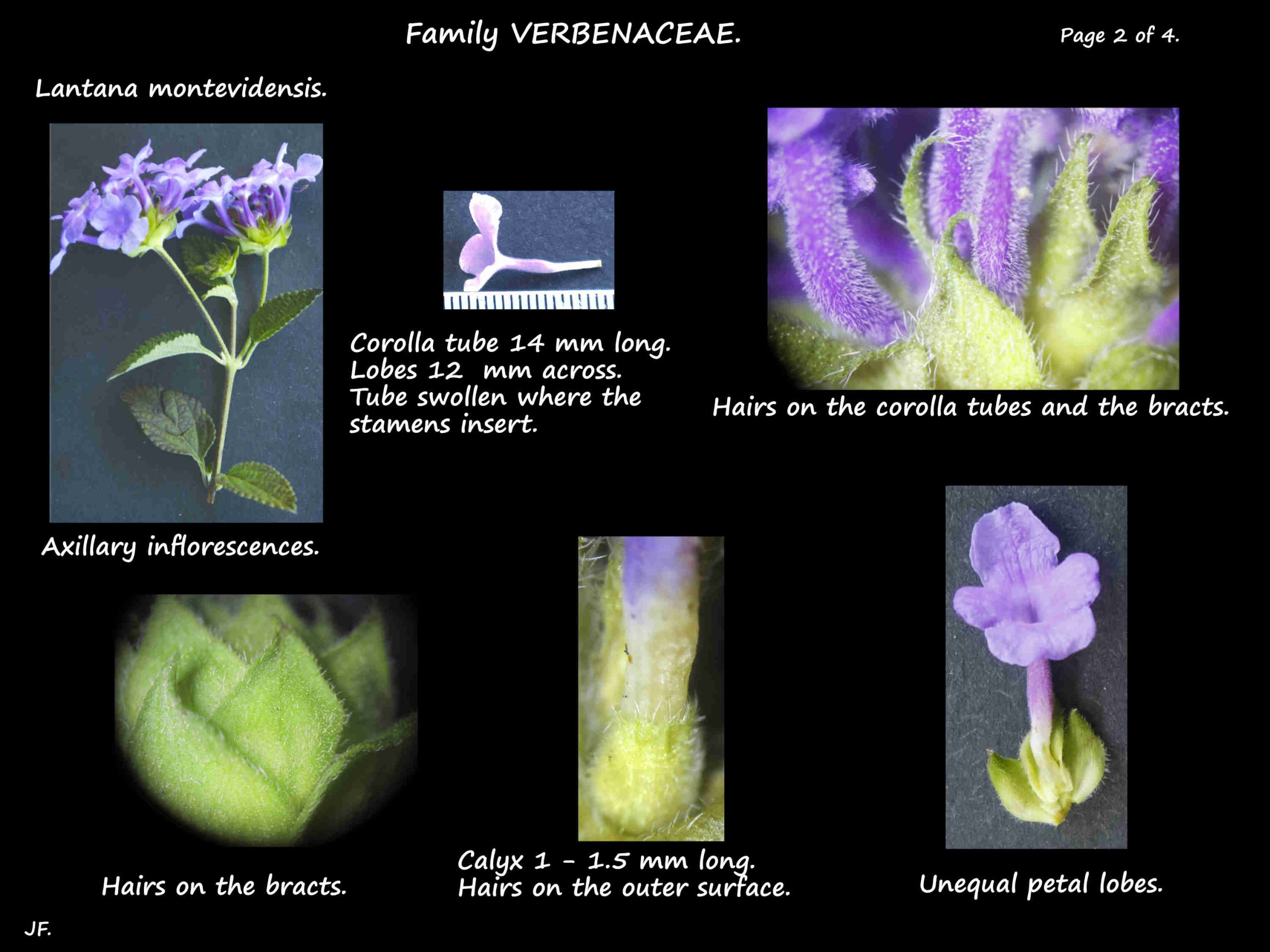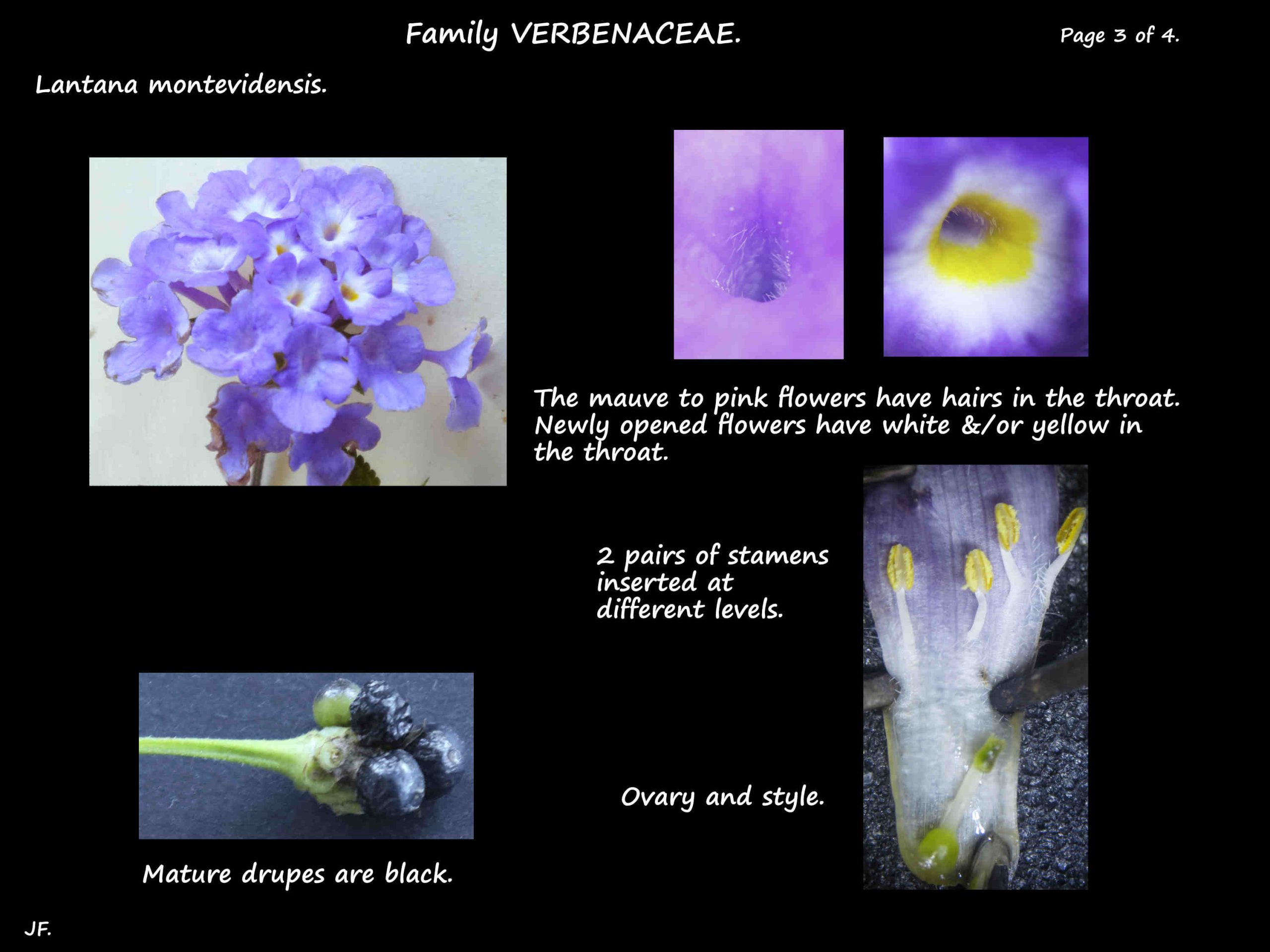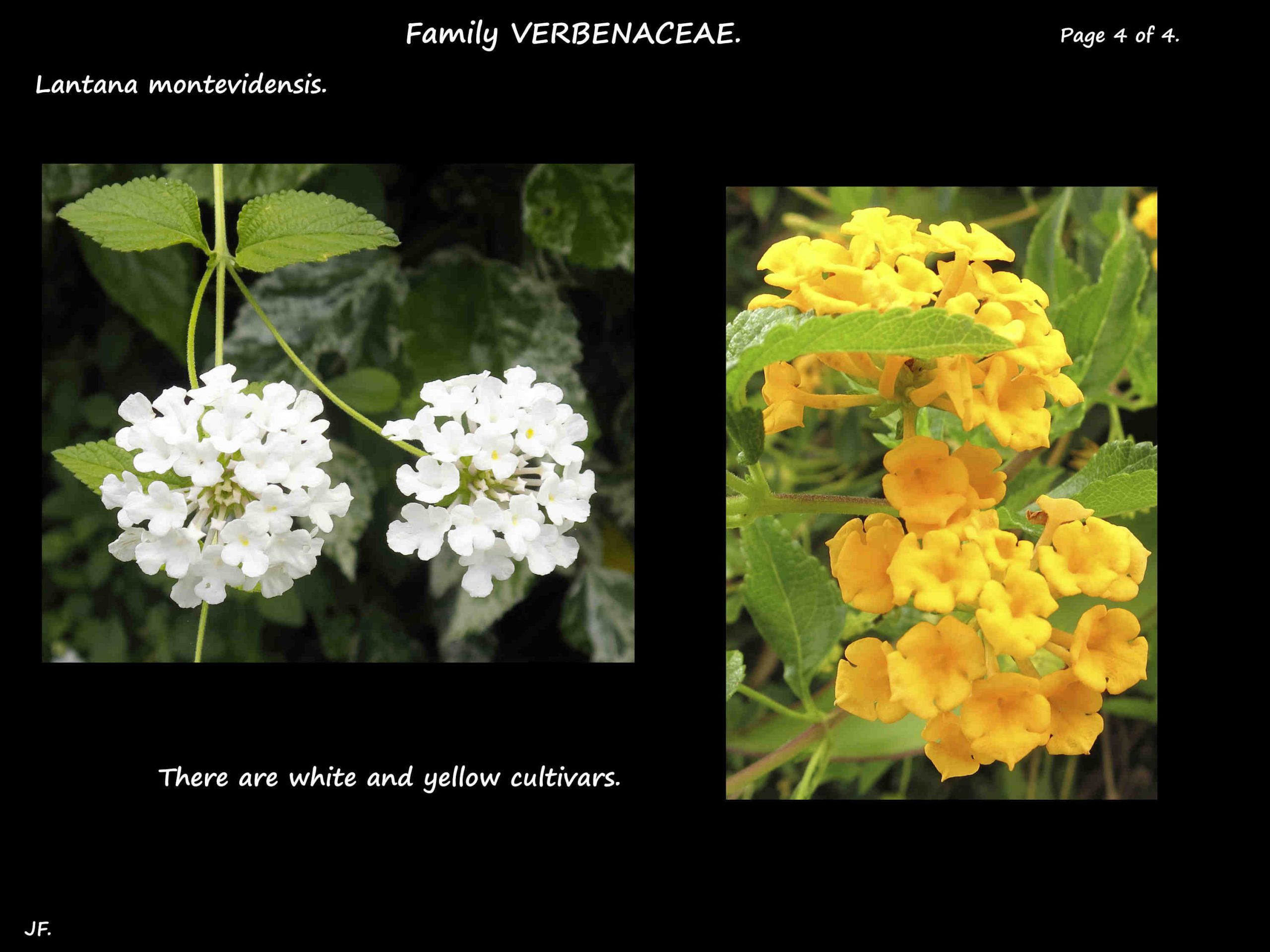Lantana montevidensis.
From South America it is naturalised in Queensland.
It is classified as a weed but still widely cultivated as a ground cover.
Creeping, Purple or Trailing lantana is a low growing trailing shrub but it can
scramble over vegetation up to 3 m high.
The small young branches are 4-angled but become cylindrical as they grow.
There are no thorns.
The dark green leaves, on petioles a few mms long, are opposite.
They are ovate and up to 4 cm long and 2.5 cm wide.
The edge has small teeth and there are short hairs on the lower surface.
The upper surface has small bumps and may have a few hairs on the midrib.
Inflorescences, on stalks up to 8 cm long, are in the leaf axils along the branches.
They are a head of flowers that is up to 4 cm across.
There are large hairy green bracts under the flowers.
There is a small calyx of fused sepals.
The 4 fused petal bases form a narrow tube with flaring lobes.
There are hairs on the outer surface of the upper part of the tube and the lobes.
There are longer hairs in the throat and inside the tube.
In each head the outer flowers open first.
The flowers are mauve, pale purple or pink.
When they open they have white, and sometimes yellow, in the throat.
With age they become all purple.
The 4 stamens insert into the middle section of the corolla tube.
They are in 2 pairs that insert at different levels.
They do not extend outside the tube.
The fruit are drupes around 7 mm across that ripen from green to dark purple or black.
Each has one hard seed about 4 mm across.
There are a number of cultivars and hybrids in various colours.
L. montevidensis ‘Alba’ is a white cultivar; and a yellow cultivar is a hybrid of
L. montevidensis with L. camira.
The cultivars are often sterile so do not produce fruit.
J.F.





